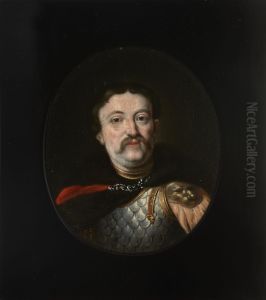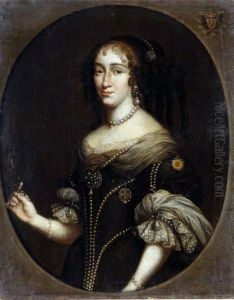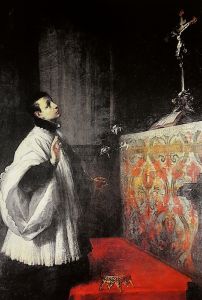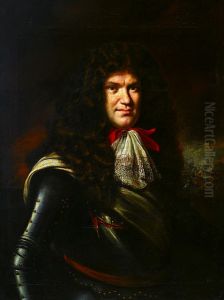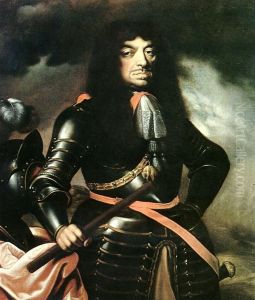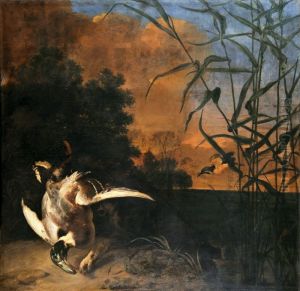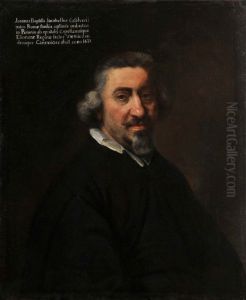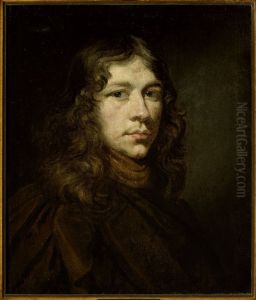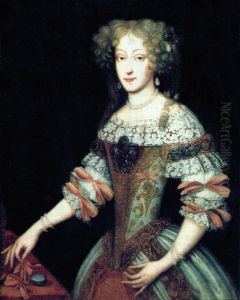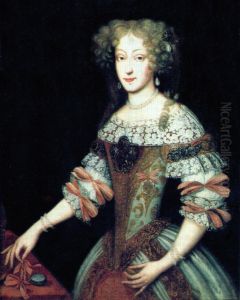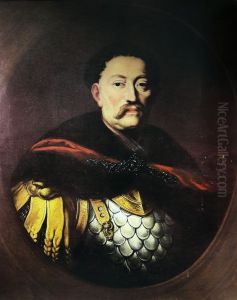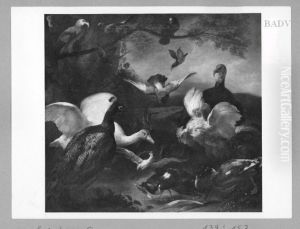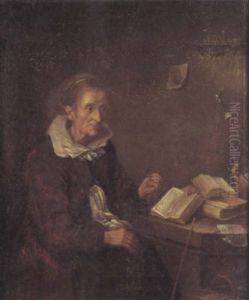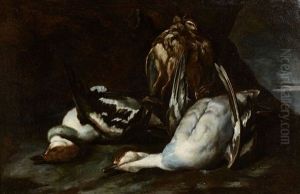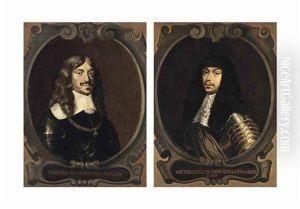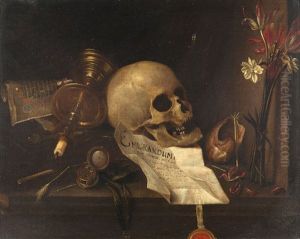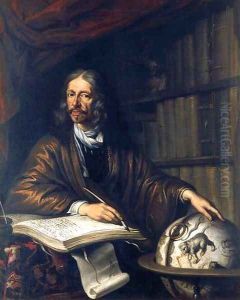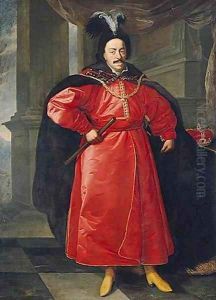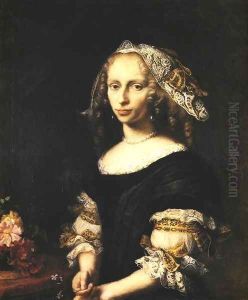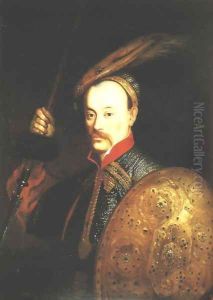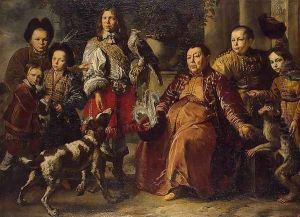Daniel Schultz Paintings
Daniel Schultz the Younger, born in 1615 in Gdańsk (then part of the Polish-Lithuanian Commonwealth, now Poland), is celebrated as one of the most prominent portrait painters of the 17th century in Poland. Schultz's artistic journey began in his hometown, but to hone his skills and expand his artistic vision, he traveled extensively across Europe, absorbing influences from leading art centers of his time. His sojourns included stays in the Netherlands and Italy, where he was deeply influenced by the works of the Italian masters, as well as by the Dutch school of painting, known for its detailed realism and sophisticated use of light and shadow.
Schultz's return to Poland marked the beginning of his most prolific period. He quickly gained fame and recognition at the court of King Władysław IV Vasa, and later, under the patronage of King John II Casimir Vasa, he became the most sought-after portraitist among the Polish nobility and clergy. Schultz's portraits are celebrated for their meticulous detail, psychological depth, and the sophisticated portrayal of his sitters' status and personality. Unlike many of his contemporaries, Schultz had a remarkable ability to capture not just the physical likeness but also the character and inner world of his subjects. This made his portraits highly valued for their emotional depth and realism.
Beyond portraiture, Daniel Schultz also engaged in creating religious and allegorical paintings, although these works are less well-known today. His contribution to the art of the Polish-Lithuanian Commonwealth is significant, not only for the high artistic quality of his works but also for his role in introducing and integrating Western European artistic techniques and styles into Polish art.
Schultz's legacy is preserved in numerous collections, both in Poland and abroad, with his works held in high esteem for their artistic merit and historical value. He passed away in 1683, leaving behind a rich oeuvre that continues to be studied and admired for its contribution to the European Baroque movement. Through his portraits, Daniel Schultz the Younger offered a window into the soul of the Polish 17th-century aristocracy and clergy, immortalizing their figures for generations to come.
